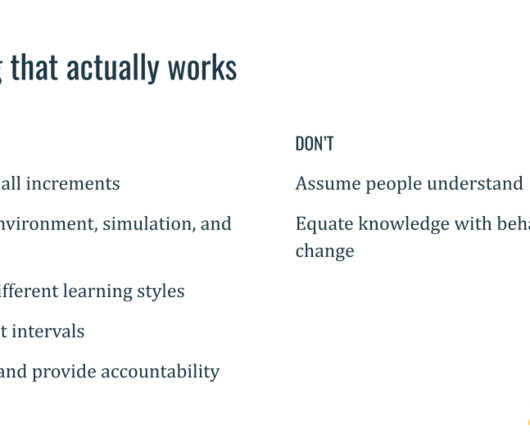Developing staff technology skills in your nonprofit
NTEN
JUNE 6, 2023
In this post, I will briefly explain how to pinpoint which technology skills folks need, assess current skill levels, provide training that doesn’t stink, and nurture a technology-positive culture where tech skills are a priority. Match the learning environment as closely as possible to the environment where people must apply the skill.















Let's personalize your content